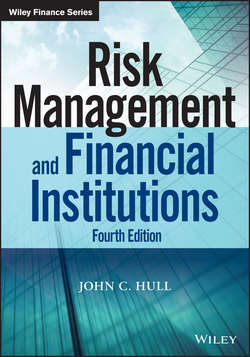Читать книгу Risk Management and Financial Institutions - Hull John C. - Страница 26
На сайте Литреса книга снята с продажи.
PART One
Financial Institutions and Their Trading
CHAPTER 2
Banks
2.8 THE RISKS FACING BANKS
ОглавлениеA bank's operations give rise to many risks. Much of the rest of this book is devoted to considering these risks in detail.
Central bank regulators require banks to hold capital for the risks they are bearing. In 1988, international standards were developed for the determination of this capital. These standards and the way they have evolved since 1988 are discussed in Chapters 15, 16, and 17. Capital is now required for three types of risk: credit risk, market risk, and operational risk.
Credit risk is the risk that counterparties in loan transactions and derivatives transactions will default. This has traditionally been the greatest risk facing a bank and is usually the one for which the most regulatory capital is required. Market risk arises primarily from the bank's trading operations. It is the risk relating to the possibility that instruments in the bank's trading book will decline in value. Operational risk, which is often considered to be the biggest risk facing banks, is the risk that losses are made because internal systems fail to work as they are supposed to or because of external events. The time horizon used by regulators for considering losses from credit risks and operational risks is one year, whereas the time horizon for considering losses from market risks is usually much shorter. The objective of regulators is to keep the total capital of a bank sufficiently high that the chance of a bank failure is very low. For example, in the case of credit risk and operational risk, the capital is chosen so that the chance of unexpected losses exceeding the capital in a year is 0.1 %.
In addition to calculating regulatory capital, most large banks have systems in place for calculating what is termed economic capital (see Chapter 26). This is the capital that the bank, using its own models rather than those prescribed by regulators, thinks it needs. Economic capital is often less than regulatory capital. However, banks have no choice but to maintain their capital above the regulatory capital level. The form the capital can take (equity, subordinated debt, etc.) is prescribed by regulators. To avoid having to raise capital at short notice, banks try to keep their capital comfortably above the regulatory minimum.
When banks announced huge losses on their subprime mortgage portfolios in 2007 and 2008, many had to raise new equity capital in a hurry. Sovereign wealth funds, which are investment funds controlled by the government of a country, have provided some of this capital. For example, Citigroup, which reported losses in the region of $40 billion, raised $7.5 billion in equity from the Abu Dhabi Investment Authority in November 2007 and $14.5 billion from investors that included the governments of Singapore and Kuwait in January 2008. Later, Citigroup and many other banks required capital injections from their own governments to survive.
